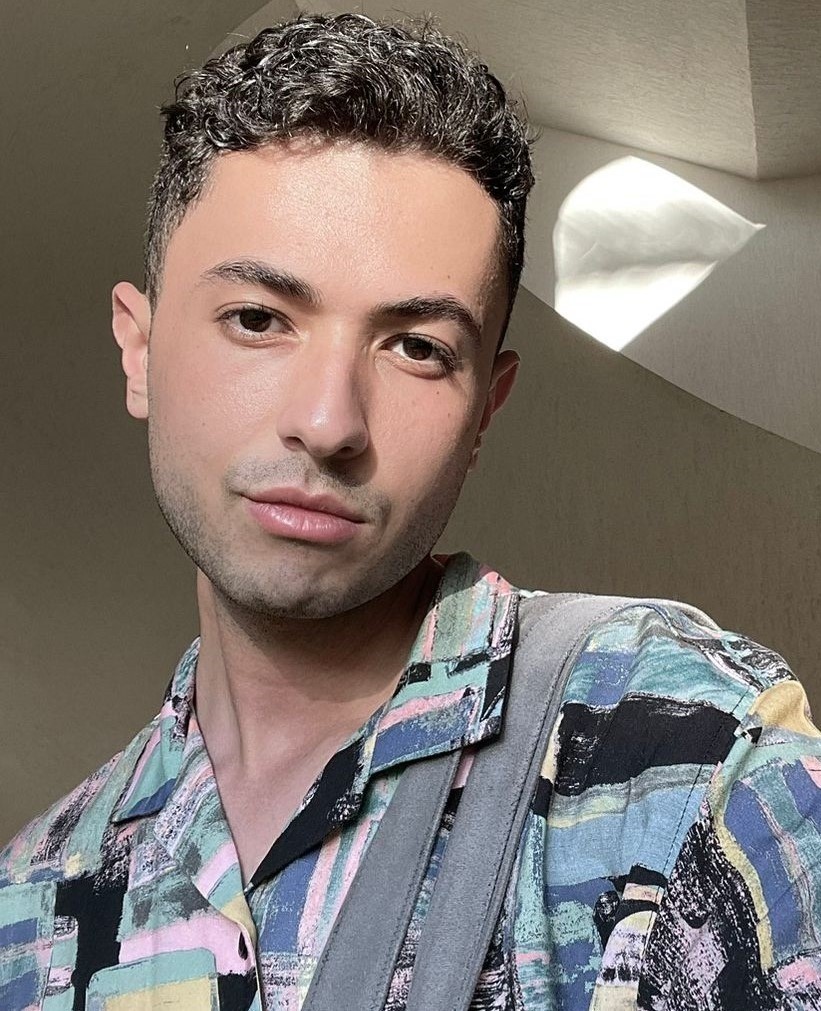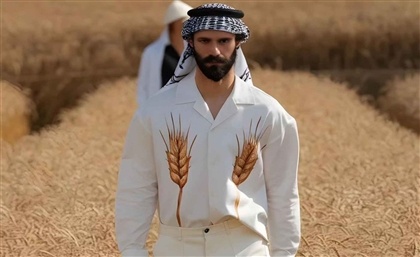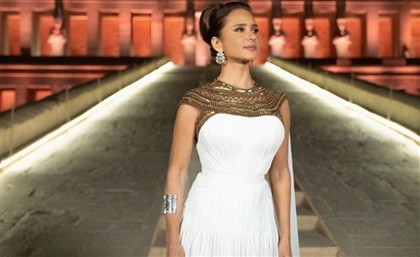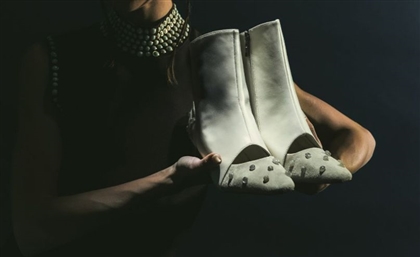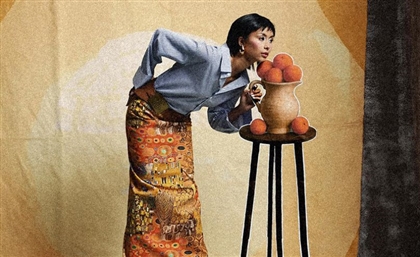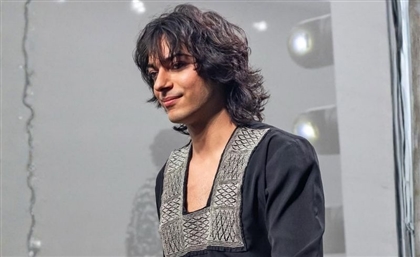Sole DXB: The Festival Shaping Fashion & Cultivating Community
A decade long journey, we sat down with Sole DXB co-founders Joshua Cox and Rajat Malhotra to unravel the festival's evolution, cultural resonance, and the future of fashion.
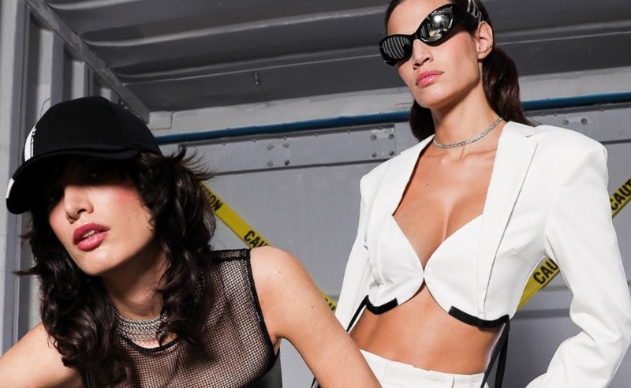
“Fashion is useless in isolation; you wear it for others to see. So, creating a platform where that can happen allows people to express themselves even further.”
The premier festival celebrating street culture in the Middle East, Sole DXB has, over the past decade, cultivated one of the world's most vibrant and pulsating hubs for fashion, music, art and lifestyle culture in the region. It was in 2010 that friends Hussain Moloobhoy, Joshua Cox, and Rajat Malhotra first envisioned Sole DXB. With backgrounds overarching branding, design and creative direction, the trio recognized a void in Dubai's cultural landscape – a lack of community spaces for those who do not fit the mould; those passionate about streetwear, urban art, and hip hop.
Drawing from their shared interests and experiences, Moloobhoy, Cox and Malhotra came together to establish Sole DXB, aiming to fill this gap and unite crowds around live performances, exclusive fashion drops, and emerging talent. Starting as a small gathering, Sole DXB has swelled in size and stature annually. Major brands from Dior to Nike now jockey for prime real estate, eager to unveil flagship product launches exclusively at the festival. Headlining musical performances by artists in the hip hop and regional pop scenes have become the event's hallmark.

Beyond the buzz of commerce and performances, Sole DXB proudly champions emerging creative voices across visual arts, fashion and music through dedicated showcases and activations. The festival shines a light on up-and-coming fashion designers and artists, and independent brands introducing their inaugural collections often receive widespread acclaim and industry exposure for the first time on Sole’s stages. In this way, Sole DXB has directly supported skyrocketing career trajectories over the years.
Staying true to its founders' core ethos, Sole DXB continues to place community at its heart. Beyond gathering diverse crowds annually, the festival's ambition extends to fostering cultural connections among global cities through collaborative artistic exchanges. This emphasis on nurturing a vibrant community not only catalyzes the rise of thriving brands but also steers the festival's trajectory.
Under Sole DXB's inclusive umbrella, brands like Shabab INTL, Leaf Apparel from South Africa, and various regional labels contribute significantly to the region's cultural richness. The fashion lineup for Sole DXB 2023 reaffirms its standing as a launchpad for emerging regional talents, drawing attention from heavyweights in the fashion realm. Independent labels such as Sudanese SN3 Studio, Turkey's Les Benjamins, and Egypt's Be Indie offer a glimpse into the forward-looking vision of the Middle East's most progressive designers. Simultaneously, industry leaders like Adidas, Anti Social Social Club, Aspics, and Wilson will unveil their latest collections, solidifying Sole DXB's status as the paramount fashion destination in the region.
In an exclusive virtual sit-down with Sole DXB co-founders Joshua Cox and Rajat Malhotra, SceneStyled caught up with the duo to delve into the decade-long journey of Sole DXB, exploring its transformative impact on the fashion landscape, the festival's unique cultural intersection, and the visionary perspectives shaping the future of the region's fashion industry.

Q: Sole DXB has developed into a renowned cultural festival in the region. Could you share your insights on how the event has played a role in shaping the fashion landscape in Dubai and beyond?
Josh: Ten years ago, we began our journey when we were seeking a platform for people like us. At that time, such a platform didn't quite exist in our part of the world. We understood that we were considered a secondary market in the industry…
Raj: Look, I think there are a few things to consider. The market here, in general, has always been very closed, retail mall-focused, especially in the fashion space. That's what the market looked like traditionally. So, as a result, historically, there was a lot of chain retail here, which still exists, and there's a place for that in every market. But the opportunity for independent players or players that felt like they couldn't find the right adjacencies or the right environment to actually position their brand — that's what we were able to bring to the table.
Essentially, the way we felt it started is because we filtered down to what we thought was good. We filtered down to what we thought was going to work. Because of that, there was an element of personal taste that came in. And I think as you saw people coming in, you saw that that personal taste was adjacent to where they saw their brand's position. There were a lot of building blocks to get there, but I think the main thing, or one of the main things, was to create a physical environment that did not mimic a lot of the other available options in the city and region at the time.

Q: So basically showcasing products and ideas that were local, that shared a similar cultural value?
Raj: Yeah, I mean, look, that's a significant aspect of what the platform represents. It didn't start with that specific aspiration, but given the relatively small size of the local industry, it allowed us to focus on younger designers who had the aspiration and were putting in the work. We provided a space for them to showcase their talent, and then you saw the snowball effect of people realizing, 'Cool, I can actually make a living doing what I love.' So, absolutely, it's about platforming local and regional concepts, but also concepts from other markets that might come in, all independently owned and with a distinct self-perception.
Josh: So, for us, we started at a time when ‘sneaker culture’ and being a ‘sneakerhead’ were emerging, especially in this part of the world. Brands weren't really catering to an audience here for those products; it was often seen as an afterthought. But then the local culture began to change, adopting different ways of addressing fashion. I'm not claiming we were solely responsible, but we played a role in catalyzing this shift. People started feeling that there are others like them, and they should feel comfortable expressing themselves through fashion.
We created an environment where people eagerly anticipated doing just that, and we've seen that grow year after year. Moreover, as Raj touched on, there was a lack of platforms for those actively seeking a foothold in the industry at the time. Creating something that brought like-minded individuals together, affirming that there's an audience for what they do, was crucial. As individuals from the region who have grown up here, even in our own style, we've always integrated aspects of our culture into what we do. It's been truly gratifying to witness, especially at the show. We always look forward to what people are going to wear and what the brands are going to showcase.
Ultimately, it's about creating a space where people feel comfortable coming together and expressing themselves. Fashion is useless in isolation; you wear it for others to see, fostering a collective exchange. So, creating a platform where that can happen allows people to express themselves even further.

Q: Your festival celebrates the intersection of music, fashion, sports, and visual arts. How do you see this fusion of elements contributing to the cultural identity of the Middle East?
Josh: So, I mean, look, for us, we're a culture festival, and those are pillars of culture. The way you dress, the way you speak, the music you listen to, the arts you absorb – if you go into any kind of history or museum, those are the elements that they pick up on to identify what culture was before us. So, they are core pillars. The arts, as a movement, as a whole, is undervalued and has been for some time. However, the history of the region is its strength. For us, it is the language we speak; it is our DNA. It's about creating a platform to bring that to the forefront. We look not just at what we have here, but also at the rest of the world, seeking inspiration.

Q: What unique experiences does the festival offer to attendees?
Josh: It's such a personal thing that we offer. Again, as Raj just mentioned, we generally program things we like and curate according to what feels natural in our environment for our audience. We aim for depth in our approach.
For instance, people often simplify hip-hop culture to tagging graffiti and breakdancing, but there's so much more to it. Why did this generation of youth come together and express this art form without the input or validation of what was seen as tastemakers or the older generation above them? There's a slight sense of rebellion that you just wouldn’t see unless you dig deep, that is what we showcase, what we offer.
Year to year, it's fairly different. The music lineup is always eagerly anticipated, and brand presentations have evolved to focus not just on retail but on providing a memorable experience. We believe brands should speak to peoples’ identities, and that's what we encourage them to do. For me, the key thing is creating an environment that offers opportunities that maybe, growing up in this part of the world, I didn't necessarily have and had to travel to experience. Bringing that home is a significant personal achievement for me.
Raj: Jumping in on that as well, I think when you look at the elements you've mentioned in the pillars of sole, it's not a random confluence of pillars. What you're seeing is, first and foremost, our festival is about how to build the best quality of life in the city. These are all elements that contribute to shaping the character of a city. We view this as an opportunity to explore a culture that is now mainstream; it wasn't back in the day, but it is now.
In terms of creating a unique experience, you can build and program a festival, acting as a filter for what people should see as they come through the door. What's unique, and this applies to any festival anywhere, is the feeling and flavor that come from how your audience and community engage with you. Because of the type of audience we have, we can't recreate it on our own. They've had a stake in building this with us. That is the essence of why you gather people in a space.
Josh: One of the biggest comments we always get is, 'I can’t believe I am in Dubai, where are all these people the rest of the year?' For us, their participation adds so much to the experience.

Q: Can you tell us a little bit about some of the most memorable moments you’ve had since Sole DXB’s inception?
Raj: Our most memorable moments are probably ones we shouldn’t have out to the press. [Both laugh] It’s interesting because when we speak to people close to us who have been around since the beginning, it's always fascinating to hear how they’ve mapped their experience of Sole over a decade. They've mapped it with key moments that didn’t necessarily parallel what we would've seen. It really depends on who you ask; there have been moments where we felt like, 'Okay, something different is happening here.' There have been moments where it jumped from a block party to a festival or where it moved from us trying to figure out how to get people to calling us and asking, ‘How can we become a part of what you’re doing?’
There was a moment back in '17 where, after trying, luxury became a part of our environment. That was the first time we made that case, getting that type of player into a retail environment.
Josh: What we take a lot of pleasure in is bringing communities into one environment and being that bridge. The South African community, for example, we now have a second family in Cape Town; some are even part of our team. The memorable part is the connection, the community, our community is all over the world, intersecting. That part is amazing to see.
From a more direct point of view, in literal moments, I think from a fashion perspective, when we did our first collab with Puma or when Dior dropped the Kim Jones’ collection, these were all great moments. There have been a lot of those...
So many little moments have been markers for us, especially knowing that after the show has ended, all the hard work has paid off…

Q: When you look at these moments and reflect on them, do you think back to 10 years ago? Do you reconcile in your head that this has happened? That you’ve managed to establish so many intercultural connections?
Raj: You know, it’s not something that registers enough, and I think often it’s easy to get caught up in the day-to-day of trying to put on a show. There have been times where we can step away and see how fortunate we are to have each other and what we’ve been able to do. Our main focus is how much more we can get done; we’re just getting started. We’re starting to see talent that can push forward and frame their ideas on par with everyone else in the world. It’s very easy to get lost in the bubble, and sometimes it's best to take a step back and reflect.
Josh: For us, the realization of the impact of the past 10 years has been in the knowledge that we’ve lasted 10 years, and that part I’m proud of...Our achievements would not have been possible without all the people playing the tiny roles. It’s a collective force that makes it happen.

Q: I wanted to ask how the festival has evolved over the years? Year one to now, what are the changes you guys have witnessed, particularly when it comes to the fashion aspects of it?
Raj: I think, again, the level of seriousness, the spotlight shining on us differently. When we started in the fashion space, it was kind of difficult to convince people to take us seriously. Today, the art movement in this part of the world has been a major backbone that’s allowed us to do everything, with the government and the entertainment industry; everything that’s been happening in the city has been setting us up to take advantage of it. The drastic change is we went from a small warehouse to this massive platform where we build everything from scratch. From a hundred people to thousands of people, it’s a very different place now, a little monster we’ve made.
We’ve managed to keep a consistent audience with a certain energy. People leave with a positive experience; that’s our main takeaway. Being able to scale and maintain that is probably one of the hardest things. Kids who we saw growing up are now becoming professionals, seeing brands who made their first drops with us now have their own flagship stores is incredible. It’s a coming of age of sorts; at first, we had something to prove, and now it’s a question of how do we take advantage of our momentum.

Q: There’s an overarching theme that I think guides Sole, and that's nurturing a community. Can you tell us about some of the brands or initiatives that have thrived under Sole’s umbrella? How have those managed to contribute to the region and Sole’s cultural vibrancy?
Josh: We would very cautiously take claim to any of these local brands; they all put their hard work into all of this, and I wouldn’t want to take away from that. But I could name some of the ones I’ve witnessed grow. Shabab International has done an incredible job; South Africa’s Leaf Apparel, an independent skate brand, seeing them go from a little shop in his house to having a store in one of the busiest streets in the city. Lots of Saudi, Kuwaiti, Qatari brands as well… So many independent local brands.
Raj: My view is a little different; the product is not the point, I feel. I think these things represent different markers of our journey. When Sole started becoming the channel to drop products, it wasn’t quite about the products. It was about the fact that there are decisions being made, knowing that we have an influence on the market finally. So that was important to us. A lot of people are seeing Sole as a place to launch their ideas; the audience mirrors what they feel they want to be as well. We help them build their audience, and they help us build our audience. It’s a mechanism to connect people; it’s a way for us to be like, ‘Cool, if we create the right environment, we can help people make a living’…that’s our metric.
This market has always been great for consumption, but what we wanted to see was output and see people producing and exporting ideas to other regions, and that's what we started to see.

Q: Given the 10 years of experience, what’s your vision for the future of fashion for the region?
Raj: For us, the future of fashion is tied to two questions, ‘Can creators make a living doing what they love?’ ‘Can fashion continue to be a space for self-expression?’ And I think for us, it’s a good time for people to be able to express themselves through fashion and ideas that were created here in the region.
Another important part we would acknowledge is perhaps the most important to us, in any industry especially fashion, is how do you build a balance between good ideas while not pushing overconsumption. We’ve got a problem with sustainability in the industry, so we hope the future of fashion out here is younger players get access to the ideas and means that can make them more sustainable from the beginning instead of figuring out how to retrofit them later.

Q: What advice would you give up and coming designers within the region?
Josh: For me personally, it is to set goals, chase them, and yes, it takes knocking down some doors, but persistence is key. Surround yourself with good partners and a team. Don’t be afraid to take a little risk. Be smart.
Raj: Ditto. Learn the fundamentals of your business, have the work ethic, and deliver.
Set to return to Dubai Design District for its latest edition, this year’s Sole DXB - its 11th edition - will take place over 3 days, from December 8th to the 10th.
- Previous Article Egyptian Label 'The Front Row Studios' Debuts With Monochromatic Line
- Next Article Monochrome Monday: The Ivory Edition
Trending This Month
-
Nov 08, 2025

